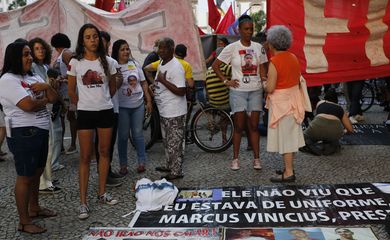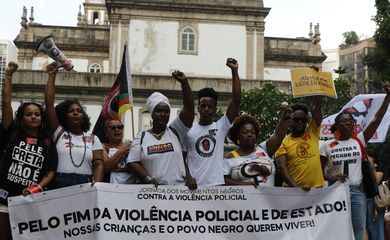More than 15,000 youths were killed in Brazil over last 3 years

In the last three years, more than 15 thousand children and adolescents up to the age of 19 were killed violently in Brazil. During this time span, the proportion of deaths caused by police intervention was on the rise. The figures can be found in the second edition of the report Panorama of Lethal and Sexual Violence against Children and Adolescents in Brazil, released Tuesday (Aug. 13) by the United Nations Children’s Fund (UNICEF) and the Brazilian Public Security Forum (FBSP).

A total of 4,803 intentional violent deaths of children and adolescents were recorded in 2021—5,354 in 2022 and 4,944 in 2023.
“It’s an appalling picture. It really is absurd that we should lose the lives of 15 thousand children and adolescents in three years,” says UNICEF’s Protection against Violence Officer Ana Carolina Fonseca.
The survey provides data on criminal records such as intentional homicide, femicide, robbery followed by death, bodily injury followed by death, and deaths resulting from police intervention, whether or not the officer was on duty. Information on sexual violence was also collected.
This set of data is described as a more complete indicator for dealing with lethal violence within the parameters of public security. The Forum is an NGO made up of security professionals, academics, and other representatives of society.
Skin color
Like other types of violence that affect Brazilians regardless of age, the violent deaths of children and adolescents mainly affect the black and brown population.
In the last three years, 91.6 percent of deaths from lethal violence among children and adolescents involved people aged 15 to 19, 82.9 percent were black and brown, and 90 percent were male.
According to the survey, the rate of violent deaths for each group of 100 thousand black or brown kids up to the age of 19 is 18.2, compared to 4.1 among whites. This means that the risk of a black or brown male teenager being murdered in Brazil is 4.4 times higher than that of a white teenager.
UNICEF’s violence protection officer names racism as an “important issue” behind these figures.
“The challenge is really to confront racism, which is also present in the actions of police forces, in the way services are structured to respond to these deaths, from the point of view of both prevention and investment in investigation,” the UNICEF representative argued.
“We’re talking about a group that’s not protected in the same way as white people. There’s an idea that these lives are worth less than others,” she noted.
Police violence
Over the three years surveyed in the report, there was an increase in the proportion of deaths of young people caused by police intervention. Interventions accounted for 14 percent of cases in 2021, a proportion that surged to 17.1 percent in 2022 and to 18.6 percent in 2023. This represents almost one in five violent deaths.
While the rate of fatalities caused by the police among people over the age of 19 is 2.8 deaths per 100 thousand, in the 15–19 age group it reaches six deaths per 100 thousand people—more than double (113.9%) the rate seen among adults.
“Unfortunately, young black and brown lives are still in the crosshairs of police action,” Ana Carolina said.
In the specialists’ view, a homicide reduction policy focused on children and adolescents must necessarily consider “the control of police use of force,” the report reads.
“We need to look at Brazil while understanding the differences and looking precisely for the places where this use of force is excessive and lethal, in contrast with the rest of the country,” she went on to argue.



